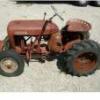Sign in to follow this
Followers
0

e-tank or sand blast which better?
By
855ownerJoel, in Restorations, Modifications, & Customizations

By
855ownerJoel, in Restorations, Modifications, & Customizations